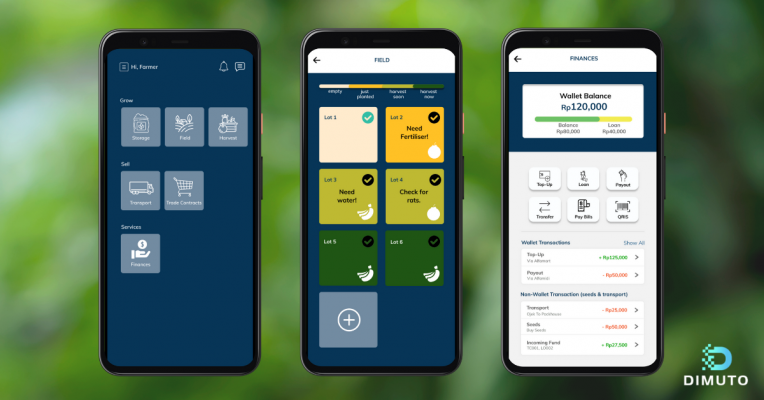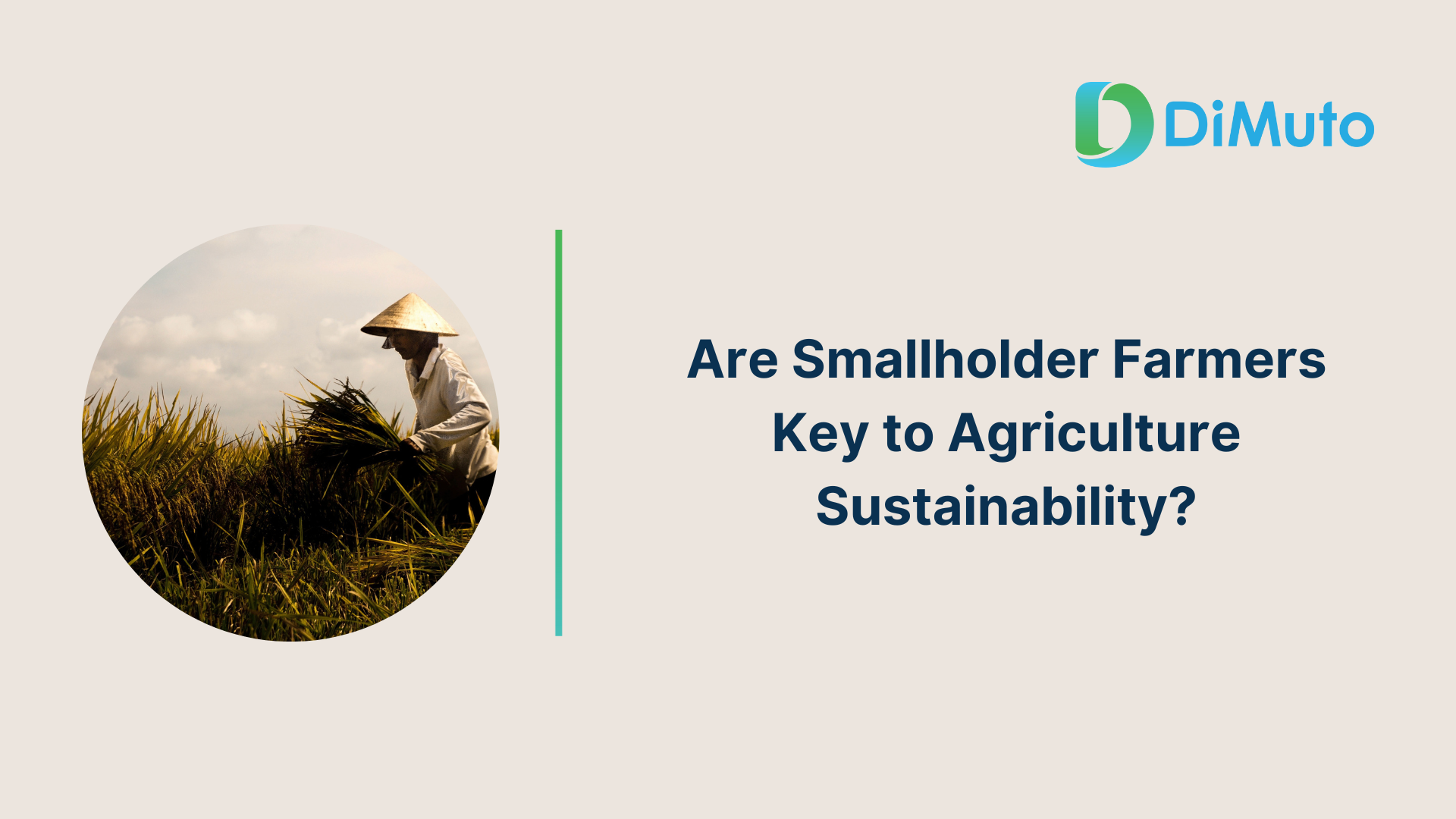The need for investments in sustainable food systems is highly critical. With the world’s population estimated to rise to 9.8 billion by 2050, there will be greater stress on our current food systems. Additionally, the impacts of climate change bring additional threats to agriculture. A warming climate could cut crop yields by more than 25 percent, while the extreme weather events associated with climate change can have devastating effects on farmers, their land, and crop.
Who are the smallholder farmers?
Smallholder farmers are individuals who grow commercial crops or livestock on less than 2 hectares of arable land. Smallholder farmers can also have numerous landholdings in different nations, but their overall landholdings must be under 2 hectares.

The role of smallholder farmers in sustainable food system
Smallholder farmers can be at the vanguard of global efforts to protect and regenerate nature with the correct support. Empowering smallholders to employ sustainable and regenerative farming practices would allow them to replenish the land for current and future generations while increasing yields and creating agriculture resilience, generating prosperity for farmers and their families and positive effects on the environment.
In Brazil, for instance, a report by the Stockholm Environment Institute found that ‘between 2004 and 2011, landowners with more than 500 hectares (1,235 acres) of property were responsible for about 48% of the deforestation. Areas owned by smallholders accounted for 12% of the forests destroyed during the same period. However, since 2005, the contribution to annual deforestation by the largest landowners has fallen by 63%, while that of smallholders has increased by 69%.’ Smallholder farms are crucial in determining whether a sustainable food system can be achieved
Challenges Faced by Smallholder Farmers for Profitability
Few smallholder farmers have access to formal training, sophisticated farm supplies and equipment, and financial capabilities to increase soil health and production. Many smallholders also lack official paperwork proving ownership of their property, limiting their options for growing what, when, and how. As such, long-term, sustainable farming practices are rarely prioritized.
Smallholders are also hampered by systemic concerns such as gender inequity, health issues, and lack of sanitation. As a result, there are significant obstacles and potential in assisting smallholder farmers in adopting regenerative agricultural principles.
Furthermore, many of these variables have limited the contribution of smallholder farmers to urban consumers. As a result, it is evident that a sustainable food system must be supported by policies that allow smallholder farmers to realize their full potential while managing with externalities and limits.
If smallholder farmers are to play an essential part in a sustainable food system as sustainable food producers and food security providers, they will need to be equipped with training, equipment and financing that rewards them for sustainable farming practices. The challenge would then be to ensure that monitor and ensure help is provided to truly sustainable farmers.
How can Smallholder Farmers Benefit from Data Visibility?
According to Emergen Research, the worldwide food traceability market size reached $4.54 billion in 2020 and is predicted to reach $9.75 billion by 2028.
Rising demand for food traceability systems to identify mandatory paperwork and tracking for each stage of food processing is predicted to drive this revenue increase. Increased need for critical technologies in the agri-food sector is a very useful tool for analysing, monitoring, and regulating product flow. By digitalizing farm data and visibility, smallholder farmers can organize and improve their farm for higher profit margins and sustainable growth.
Additionally, as the demand for food traceability technology has been on the rise for both eco-conscious end-consumers and food businesses alike, visibility on the smallholder farmers actions on their farm fields would be key to be able to track provenance of food products.
How DiMuto Helps Smallholder Farmer with Sustainability and Visibility

L to R: Farm profile, Farm Lot Input Information, Farm Wallet
The DiMuto Farm Management application connects growing, harvesting, selling and payments for better visibility of farm operations with its three functions – Grow, Sell and Services. Using the DiMuto Farm Management Application, smallholder farmers can easily set up their digital identity on the Farm Management mobile application and connect their operations to their buyers such as procurement teams and agronomists from larger traders and packhouses within minutes. Through an intuitive interface, farmers can simplify farm administration, storing and accessing digitalized farm records, transport, and sales information easily. Additionally, they can also obtain yield estimates, track production, and get timely reminders to manage their field.
With DiMuto Farm Management app, smallholder farmers can now:
- Simplify farm administration and easily track all farm-related records all in one place, and access it at anytime, anyplace
- Connect growing, harvesting, selling and payments for better visibility of their farm operations
- Get better prices, market position and premium buyers with produce that’s traceable straight from the farm
- Gain better visibility of planning and yield estimates, track production and identify trends and potential problems
Such farm data is then automatically populated to an aggregated web dashboard for agronomists and procurement team to track the farm and estimated harvests, giving more accuracy to supply planning. The Farm Management also seamlessly connects to Production Management and Trade Management features of the DiMuto Platform, allowing AgriFood companies to track the source of their AgriFood products and raw materials, down to the farm and lot that they originated from. As an added layer of verification, all supply chain data recorded on DiMuto Platform is also uploaded on the blockchain, ensuring immutability and trust.
With increasing demands from consumers and governments for sustainable sourcing, this down reaching level of supply chain visibility will help AgriFood companies track and verify key sustainability metrics. For instance, AgriFood procurement teams are now able to track measures such as the farmer that grew the food, the number of approved fertilizers, and water being used for the products that they purchased – enabling them to work more closely with farmers on the ground to ensure sustainability practices. This is particularly important for companies to achieve supply chain sustainability, given that a McKinsey report has shown that 80 of large multi-national companies (MNCs)’ impact on air, land, water, biodiversity and geological resources comes not from internal operations but from its supply chain, and most MNCs are struggling to accurately and efficiently assess supplier activities.
Research estimates that 70% of smallholder farmers in global Agri supply chains live below the global poverty line of $3.20 a day, amounting to over 122 million people. This is despite the fact that smallholder farmers producing a third of the world’s food.
The DiMuto Farm Management application also has a Digital Wallet function that helps farmers to track, receive and access digital payments. The payment rails will help DiMuto to execute smallholder farmer financing and insurance opportunities, allowing loans and payments to be directly deployed and rightfully received. The Digital Wallet is also connected to the Trade Management and the Grow aspect of the app, creating the ability to verify purpose and usage of the loans and ensuring that funds can be used for improved resiliency and sustainability of these smallholder famers.
If you are interested to learn more about how DiMuto helps improve sustainability of food systems for global AgriFood trade, reach us at [email protected].

 Español
Español 中文
中文
